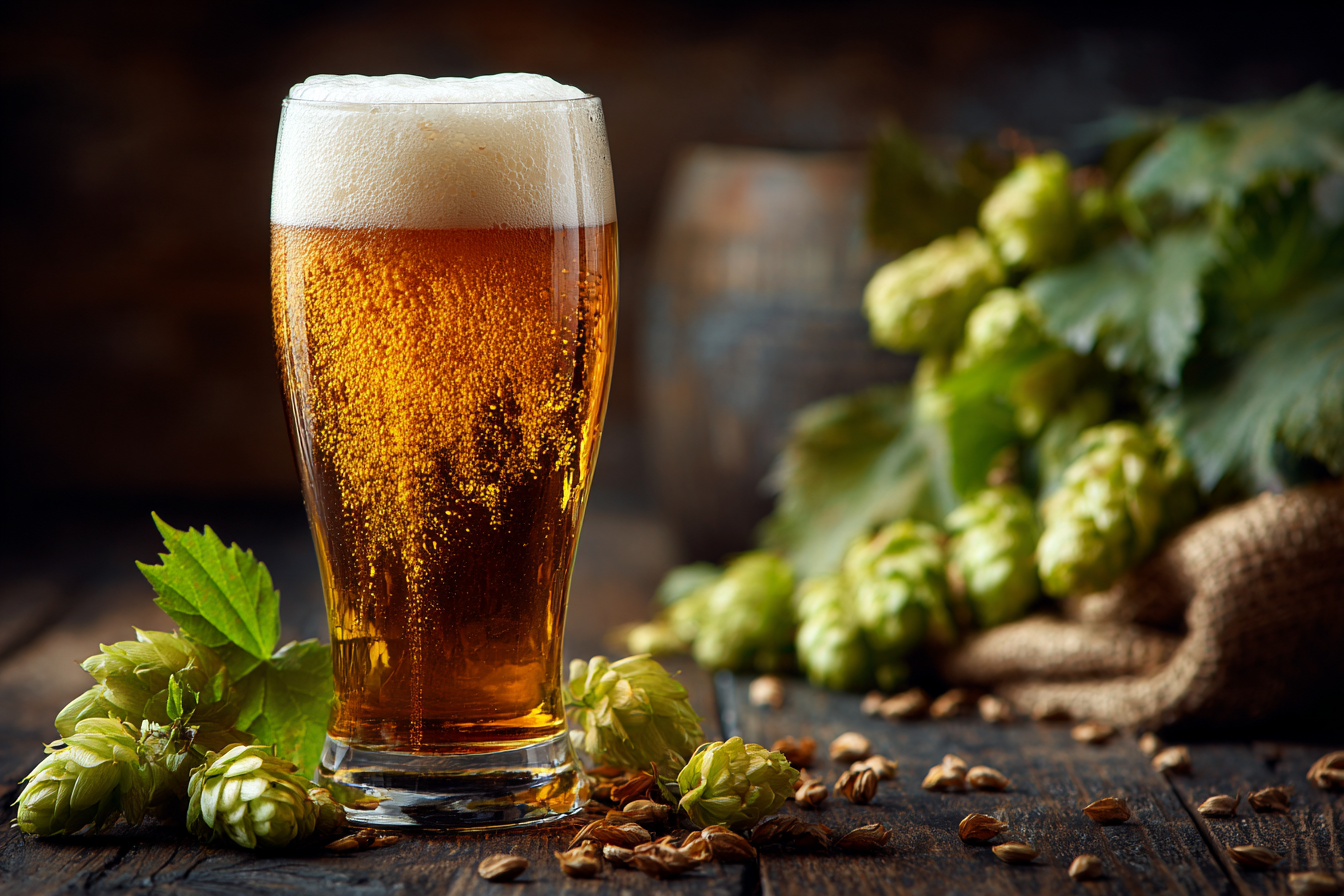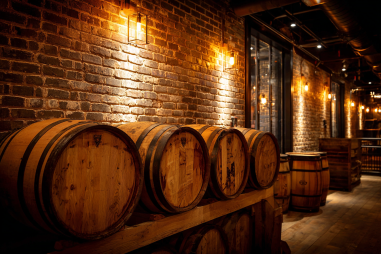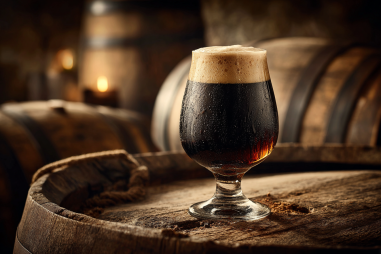Grodziskie beer is a fascinating and historic style that has captured the attention of beer enthusiasts and brewers alike. Known for its unique flavor profile and brewing tradition, Grodziskie offers a distinct taste experience that stands apart from other smoked wheat beers. In this guide, we’ll take you through the origins, characteristics, brewing methods, and modern takes on this intriguing beer style, helping you understand everything about Grodziskie — whether you’re a curious drinker or an adventurous homebrewer.
Definition and Origin of Grodziskie Beer Style
Grodziskie, sometimes spelled Grätzer, is a traditional Polish beer style that traces its roots back to the town of Grodzisk Wielkopolski in western Poland. This style gained prominence in the 17th and 18th centuries and became well-known across Central Europe by the 19th century. What sets Grodziskie apart is its designation as a smoked wheat beer with a light body and lower alcohol content.
The beer’s origins are closely linked to the local ingredients and resources available in the Grodzisk region. Historically, brewers there used oak-smoked wheat malt, which imbued the beer with its distinctive smoky character. Grodziskie was sometimes referred to as “Polish Champagne” because of its effervescent carbonation and refreshing quality. Though production dwindled in the 20th century, recent craft beer interest has revived this once-lost gem.
Traditional Flavor and Aroma Profile
The flavor profile of Grodziskie is a delicate balance between smoke, malt sweetness, and subtle hop bitterness. Characteristically, the beer features:
- Smoke: The use of oak-smoked wheat malt creates a gentle yet unmistakable smoky aroma and flavor reminiscent of a light campfire or smoked ham, without overwhelming the palate.
- Malt sweetness: The wheat base contributes a soft, bready maltiness that complements the smoke and adds a smooth texture.
- Hop character: Traditional varieties of noble hops provide a mild floral or herbal bitterness, giving a crisp finish.
- Fruitiness: Some slight fruity esters, often reminiscent of citrus or light stone fruits, can be present due to yeast fermentation.
Overall, Grodziskie is light-bodied with moderate carbonation, offering a refreshing and very drinkable experience where the smoky and wheat elements are beautifully balanced.
Typical Appearance and Alcohol Content
Visually, Grodziskie pours a clear, pale straw to golden color. Its clarity is often sharper than many wheat beers, thanks to the traditional filtration and use of pale malts. The high carbonation levels create a lively, foamy white head that contributes to the beer’s “Champagne-like” effervescence.
In terms of alcohol by volume (ABV), Grodziskie tends to be on the lighter side, usually ranging from 3.0% to 4.5% ABV. This low alcohol content supports its history as a refreshing and sessionable beer ideal for warm weather or long drinking sessions.
Brewing Methods and Ingredient Choices
Producing an authentic Grodziskie requires particular attention to malt and smoking techniques, as well as yeast and hop selections. Key points include:
- Smoked Wheat Malt: The cornerstone of Grodziskie, oak-smoked wheat malt is traditionally used. Maltsters smoke the wheat over oak wood fires, imparting the distinctive smoky character while preserving the grain’s soft bready qualities.
- Wheat-dominant Grain Bill: Typically, Grodziskie features a very high percentage of wheat malt—often 100% wheat—making it somewhat unique among smoked beers which frequently use barley.
- Yeast: Clean-fermenting lager yeast strains are preferred to maintain subtle fruitiness and not overpower the malt and smoke. The beer is traditionally fermented at cooler temperatures, reflecting its historical lager style.
- Hops: Noble hops such as Saaz or Hallertau are common, contributing gentle bitterness and floral aromas.
- Water Profile: Brewed with soft water, moderating harshness and highlighting delicate flavors.
- Conditioning: A secondary fermentation or bottle conditioning boosts carbonation, enhancing the distinctive mouthfeel.
Modern brewers may tweak these parameters slightly but often aim to keep the spirit of the style alive by honoring the smoked wheat malt and light carbonation.
Differentiation from Other Smoked Wheat Beers
While Grodziskie is a smoked wheat beer, it distinctly differs from other smoked styles, such as German Rauchweizen or Rauchbier, in several ways:
- Smoke Intensity: Grodziskie is generally lighter in smoke flavor compared to many Rauchbiers, which can be heavily smoked. The oak-smoked malt used in Grodziskie imparts a more delicate smokiness.
- Malt Base: Grodziskie’s use of almost exclusively wheat malt contrasts with many smoked beers that use barley malt.
- Body and Alcohol: Grodziskie is light-bodied and lower alcohol, while many smoked wheat beers may have a fuller body and higher alcohol content.
- Carbonation: The carbonation of Grodziskie is often higher, giving it a spritzy, effervescent quality rarely found in heavier smoked styles.
These distinctions make Grodziskie particularly refreshing and versatile, standing apart as its own category within the smoked beer family.
Modern Craft Beer Interpretations
With the resurgence of craft brewing worldwide, Grodziskie has seen renewed interest from brewers eager to revive this nearly forgotten style. Modern interpretations often experiment with:
- Smoking Techniques: Some brewers use different woods beyond oak or vary smoke levels to add complexity or highlight specific smoky notes.
- Adjuncts: Occasionally, additions like hops with unique aromatic profiles or yeast strains imparting interesting esters allow brewers to put creative spins on tradition without losing the essence.
- Hybrid Styles: Craft brewers sometimes blend Grodziskie characteristics with other styles — combining it with saisons, pale ales, or even IPAs — creating exciting crossover beers that honor the smoke and wheat core while exploring new flavors.
Nevertheless, most craft breweries aiming for authenticity keep the beer light, smoky, refreshing, and true to its Polish heritage, embracing the historic recipe while using modern techniques for consistency and quality.
How to Style and Serve Grodziskie
Given its light body and effervescent character, Grodziskie is best served chilled to around 6-8°C (43-46°F) to highlight its refreshing qualities. The beer’s sparkle and smoke make it a perfect choice for pairing with a variety of foods and occasions:
- Serving Glass: A traditional tulip or pilsner glass enhances the beer’s head retention and carbonation, allowing aromas to flourish.
- Food Pairings: Grodziskie pairs beautifully with grilled or smoked meats, light sausages, soft cheeses, and dishes with herbs. Its smokiness complements charred flavors while the wheat and carbonation cut through fattier foods.
- Occasions: Ideal for warmer weather sipping, outdoor barbecues, or as an aperitif thanks to its delicate yet complex profile.
Whether you’re enjoying a bottle at home or tasting it on draft, take a moment to appreciate the balance of smoke, malt, and hops that make Grodziskie a uniquely elegant beer style.
A Toast to a Rediscovered Classic
Grodziskie beer offers a delightful window into beer history with its origins deeply rooted in the Polish brewing tradition. Its harmonious blend of oak-smoked wheat malt, gentle bitterness, and lively carbonation creates a refreshing, approachable style that has earned the nickname “Polish Champagne.” Whether you’re a beer lover eager to explore lesser-known styles or a brewer interested in bringing an old classic into the modern era, Grodziskie provides a richly rewarding experience.
From its past as a favored Central European beverage to its current revival in craft brewing circles, Grodziskie invites discovery and appreciation. Next time you seek a beer that is both unique and steeped in history, give Grodziskie a try—you may just stumble upon your new favorite smoky wheat sensation.







